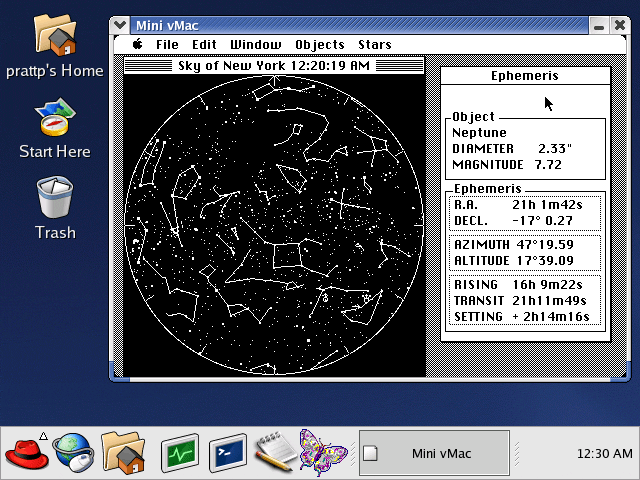

- MINI VMAC II SETUP MANUAL
- MINI VMAC II SETUP FULL
- MINI VMAC II SETUP CODE
- MINI VMAC II SETUP WINDOWS
MINI VMAC II SETUP FULL
The autoscroll feature (used in full screen mode when the emulated screen size is larger than the real screen) would not work when the emulation was stopped (using the “Stopped toggle” in the “S” command of the Control Mode). This makes it easier to have a ROM image for general use, and still be able try out another ROM image. The Linux, and other X, versions of Mini vMac will now look for the ROM image in the application directory before looking in the “~/.gryphel/mnvm_rom”, instead of after, to match the behavior of the other ports. The Linux, and other X, versions of Mini vMac can crash if the HOME environment variable is not set, due to missing error checking (which in turn was due to incorrectly disabling an alternate implementation), as reported by fzn. The Linux, and other X, versions of Mini vMac would crash when exporting a file, if the “out” folder in the application directory didn't exist, and Mini vMac lacked permission to create it, due to not properly handling errors in the routine “FindOrMakeChild” in the source file “MYOSGLUE.c”, as reported by Éric of Montréal. The OS X version of Mini vMac was using the wrong syntax for the value of the LSRequiresCarbon key in the ist file in the application bundle, as reported by Ryan Schmidt. (Thanks to the anonymous user who reported this issue.) Before finding and fixing this, I also made Mini vMac more robust in adjusting for window border sizes by using AdjustWindowRectEx and MapWindowPoints, rather than various results from GetSystemMetrics. When compiled with certain development tools this could result in the window being the wrong size, and other odd behavior. MINI VMAC II SETUP WINDOWS
Mini vMac on Microsoft Windows passed an invalid Window Style to CreateWindowEx (when not in full screen mode).This key is used for angle brackets in the German keyboard layout, for example.
MINI VMAC II SETUP CODE
Mini vMac on Microsoft Windows will now recognize the Virtual-Key code of VK_OEM_102, and translate it to the Macintosh key code of 0x0A. Why has no one complained about this issue in the last decade? But also because I'm not sure I really understand this. There is a new build option to disable this fix, -ikb 0”, because this is fairly large amount of code and US only users don't need it. Mini vMac will now check the current Keyboard Layout, and attempt to unscramble the codes, so that the Keyboard Layout chosen in Macintosh operating system running within Mini vMac will work properly. Changing the Keyboard Layout to something other than "US" may scramble the Virtual-Key Codes, strangely enough. The Virtual-Key Codes of Microsoft Windows, that are independent of differences in keyboard hardware, turn out not to be independent of the choice of Keyboard Layout. With this change, all ports can use the same platform independent event loop, as described above. MINI VMAC II SETUP MANUAL
Mini vMac used to use a standard Carbon event loop with a complicated system of timer events only because a manual event loop didn't get quite as good performance. The same fix actually also applies to Carbon.(Apple has declared Carbon very, very deprecated.) This allows matching the performance of the Carbon version, making the Cocoa version more ready for prime time.

In the Cocoa port, when the platform dependent code checks for events, rather than using a time out value, it turns out there is a bit less overhead to check for events, sleep, and then check for events again. To minimize glitches in sound output when emulation starts, stops, or just isn't running fast enough, the sound call back functions in the various Macintosh versions and the SDL version will now try to play an appropriate transition in each of these circumstances. The exact situations this happens varies for each platform. A visible consequence of this is that the emulation will now stop running in certain circumstances when it used to continue running, such as during the open disk image dialog. Instead of the platform dependent code calling a routine to emulate one tick (sixtieth of a second) whenever appropriate, the main loop of the program is now in platform independent code, which periodically calls platform dependent code to check for events. To make Mini vMac simpler and more maintainable, the interaction between platform dependent code and platform independent code has been changed a bit. Changed URL displayed in about screen to " ".






 0 kommentar(er)
0 kommentar(er)
